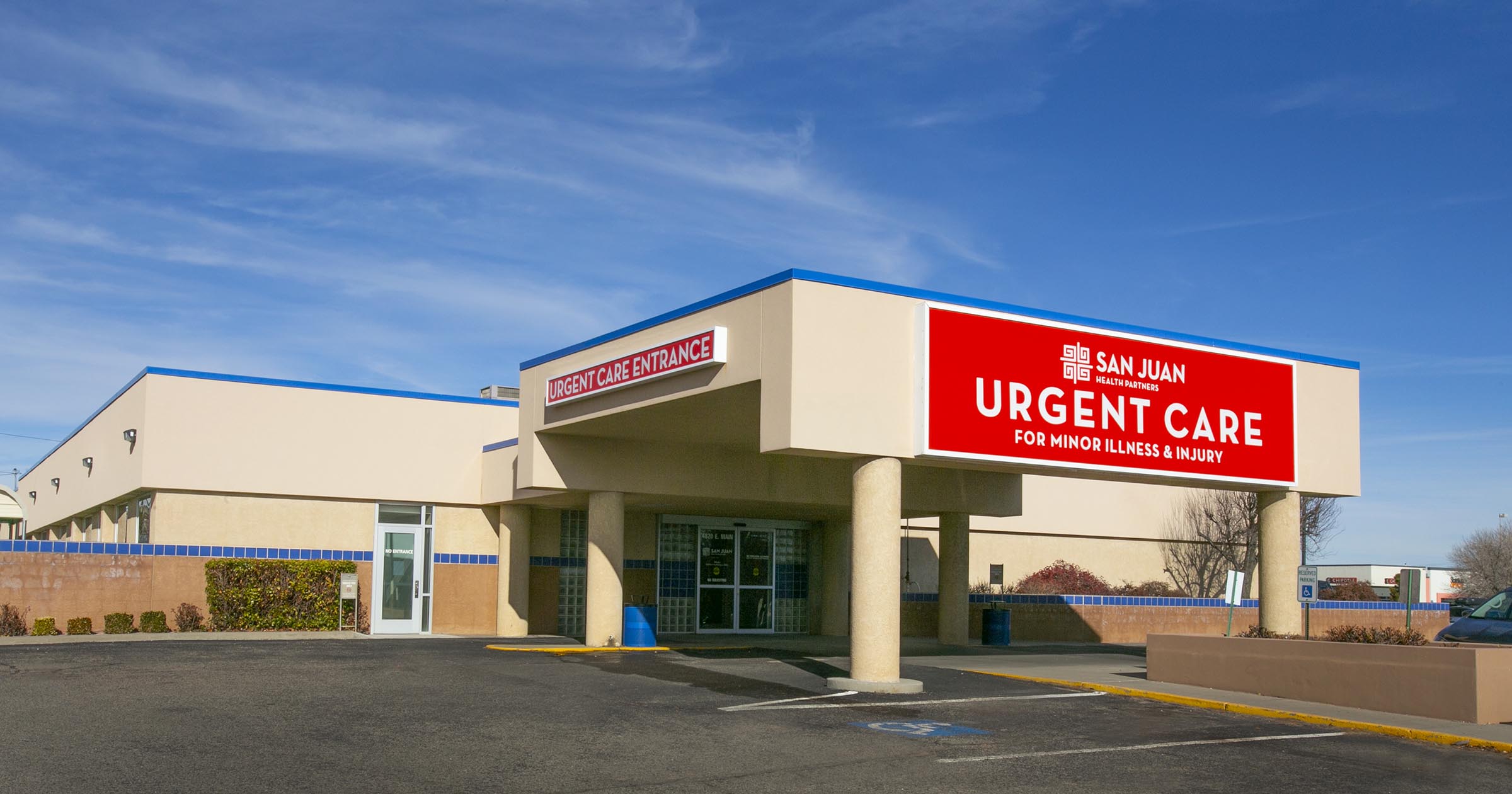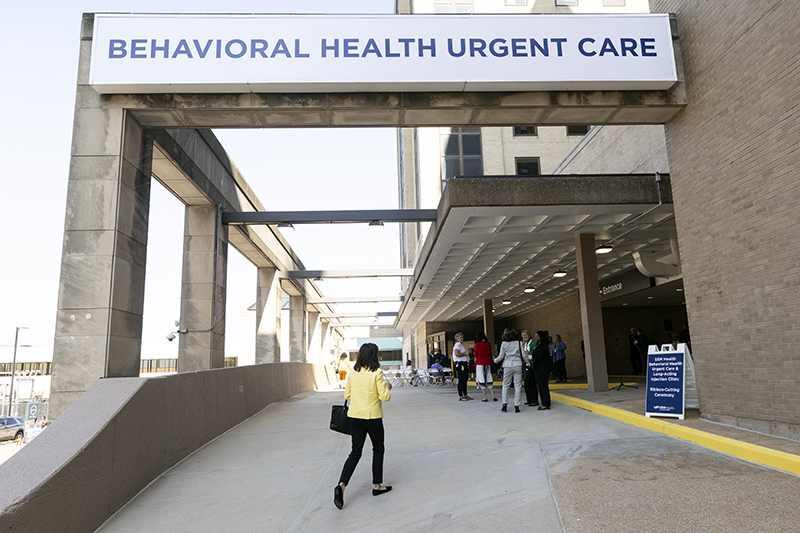Specialist Suggestions on Navigating Clinic Options for Urgent Care
Specialist Suggestions on Navigating Clinic Options for Urgent Care
Blog Article
The Relevance of Urgent Care Centers in Bridging the Gap In Between Health Care and Emergency Services
Immediate care facilities have emerged as a vital element of the healthcare landscape, efficiently dealing with the crucial need for immediate clinical focus without resorting to emergency solutions. The progressing function of urgent care centers raises vital concerns about their assimilation within the wider healthcare system and the effects for individual outcomes and source allotment.
Review of Urgent Care Centers
Immediate care facilities have ended up being a necessary component of the medical care distribution system, offering easily accessible clinical solutions for non-life-threatening conditions. These centers commonly operate outdoors conventional office hours, offering individuals an alternative to emergency clinic and medical care setups. Patients looking for urgent care frequently existing with problems such as minor injuries, infections, or illnesses that require punctual interest but do not posture a prompt danger to life or arm or leg.
Urgent care centers are staffed by a series of healthcare experts, consisting of physicians, registered nurse practitioners, and doctor aides, who are furnished to detect and deal with various medical issues. They often feature diagnostic tools such as X-ray equipments and laboratory services, enabling them to give extensive care on-site.
The facility of immediate care centers has been affected by the boosting need for prompt clinical services in a busy society, where people may have a hard time to protect consultations with medical care suppliers. Therefore, these centers intend to reduce congestion in emergency departments, boosting total medical care effectiveness. Additionally, immediate care facilities typically serve as a bridge between medical care and emergency situation services, making certain that patients get ideal treatment customized to their specific medical requirements.

Advantages of Urgent Care Services
Accessing prompt treatment is a considerable benefit of immediate care services. These centers supply prompt attention for non-life-threatening conditions, properly decreasing delay times compared to typical emergency situation departments. People seeking care for minor injuries, ailments, or immediate wellness concerns can get therapy without the long hold-ups typically connected with healthcare facility brows through.
An additional trick advantage is the extended hours of procedure. Lots of urgent treatment centers are open evenings and weekends, fitting people that might not have the ability to visit their health care provider during basic office hours. This flexibility makes immediate treatment an available alternative for those with hectic routines or abrupt health issues.
Moreover, urgent care centers typically use a wide variety of solutions, including analysis screening, X-rays, and standard lab services. This extensive approach enables fast medical diagnosis and treatment, improving person satisfaction.
Furthermore, immediate treatment facilities are usually much more cost-effective than emergency clinic, making them an attractive alternative for individuals without insurance policy or those with high-deductible plans. In general, immediate treatment services play an essential role in providing accessible, prompt, and inexpensive healthcare.
Comparison With Health Care
Typically, patients often consider their alternatives in between immediate care centers and health care companies when looking for medical focus. Both offer necessary roles in the health care system, yet they differ dramatically in extent, access, and expense.
Key treatment service providers are usually the initial point of get in touch with for individuals, focusing on long-lasting wellness monitoring, preventive care, and chronic illness monitoring. They offer continuity of care, cultivating a patient-provider connection that enables comprehensive health and wellness analyses and personalized therapy strategies. Nonetheless, scheduling an appointment can be lengthy, often requiring days or weeks beforehand.
On the other hand, urgent care centers provide immediate care for non-life-threatening problems that need find out timely interest, such as small injuries or infections. These centers usually operate outside of conventional office hours, suiting clients who may not be able to see their health care copyright throughout regular organization times. Additionally, urgent treatment is typically much more economical than emergency clinic visits, making it an enticing option for those with minimal health care accessibility.
Eventually, while immediate treatment centers and health care suppliers both add to patient health, they deal with distinct demands, making it vital for clients to determine which choice best lines up with their situations.
Emergency Situation Services Interaction
The communication between immediate care centers and emergency situation services is a vital element of the medical care landscape, particularly when individuals face circumstances that might escalate in intensity. Immediate care centers work as a bridge between medical care and emergency situation departments, resolving non-life-threatening conditions that need prompt attention. This partnership boosts client end results and maximizes resource allowance within the healthcare system.
When individuals offer with urgent yet not lethal issues, urgent care centers can effectively manage their requirements, relieving congestion in emergency rooms. Facilities furnished with analysis abilities can promote prompt references to emergency solutions when a patient's condition exceeds the range of urgent care therapy. This seamless interaction aids ensure that clients get the proper degree of treatment without unnecessary hold-ups.
Additionally, reliable interaction in between immediate care service providers and emergency services is vital. Sharing person details and therapy backgrounds cultivates worked with treatment, reducing the risk of redundant examinations and treatments. As medical care proceeds to progress, the vibrant connection in between immediate care facilities and emergency situation services will certainly play a crucial duty in enhancing client care performance, contentment, and general health and wellness outcomes within the area.
Future of Urgent Care Facilities
As healthcare needs evolve, the future of immediate care centers is positioned to become progressively important to the general clinical ecosystem (Urgent Care). These centers are likely to expand their duties by integrating advanced modern technologies, such as telemedicine, synthetic knowledge, and electronic wellness record combination. This will certainly enhance individual gain access to and simplify care sychronisation in between urgent care, health care, and emergency solutions
In addition, urgent care facilities are expected to expand their solution offerings to consist of preventive care and persistent condition management. This shift will place them as important elements in handling populace wellness, lowering the burden on emergency departments, and dealing with spaces in medical care availability.
The growing trend of value-based treatment will certainly better increase the makeover of immediate care facilities, prompting them to focus on patient outcomes and complete satisfaction. Facilities may likewise embrace collective method designs, working closely with specialists and health care suppliers to ensure thorough person monitoring.
Verdict
To conclude, immediate treatment facilities serve a crucial function in the health care system by offering prompt accessibility to treatment for non-life-threatening conditions, effectively minimizing pressure on emergency services. Their expanded hours and diverse variety of services improve patient benefit and complete satisfaction, while also ensuring ideal care delivery. As medical care needs remain to advance, the role of immediate care facilities will likely end up being progressively substantial, additional linking More about the author the gap between key care and emergency services.
The facility of immediate care centers has actually been influenced by the raising demand for prompt medical services in a hectic society, where patients may battle to secure appointments with key treatment suppliers. Additionally, immediate treatment centers commonly offer as a bridge between key treatment and emergency solutions, ensuring that individuals receive ideal care tailored to their specific clinical requirements.
Several immediate care facilities are open nights and weekend breaks, fitting individuals who might not be able to visit their key care my latest blog post service provider throughout conventional workplace hours (Urgent Care). As health care continues to advance, the dynamic relationship between immediate treatment facilities and emergency situation solutions will certainly play an essential duty in enhancing individual treatment effectiveness, satisfaction, and overall wellness outcomes within the community

Report this page